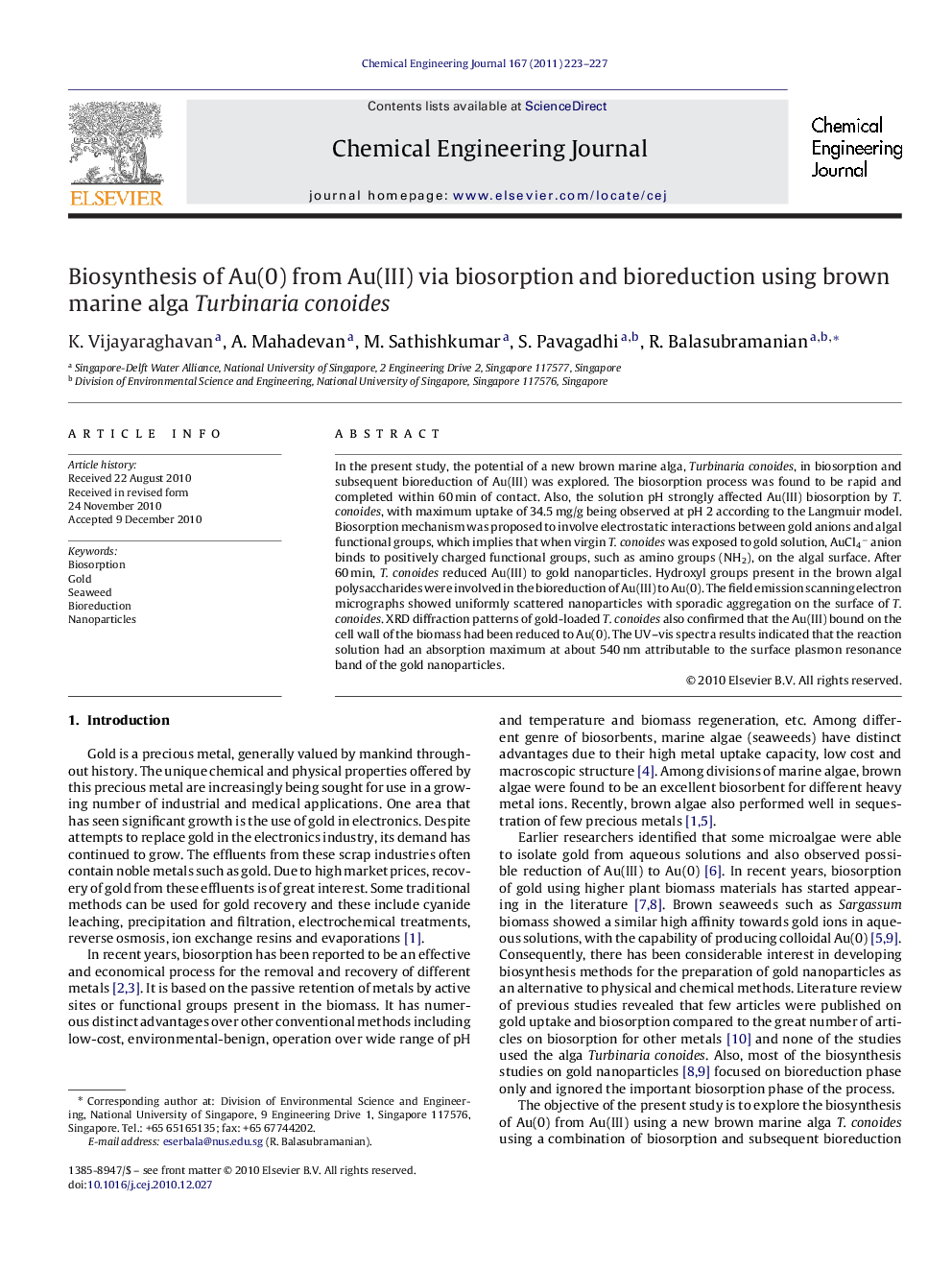| Article ID | Journal | Published Year | Pages | File Type |
|---|---|---|---|---|
| 151628 | Chemical Engineering Journal | 2011 | 5 Pages |
In the present study, the potential of a new brown marine alga, Turbinaria conoides, in biosorption and subsequent bioreduction of Au(III) was explored. The biosorption process was found to be rapid and completed within 60 min of contact. Also, the solution pH strongly affected Au(III) biosorption by T. conoides, with maximum uptake of 34.5 mg/g being observed at pH 2 according to the Langmuir model. Biosorption mechanism was proposed to involve electrostatic interactions between gold anions and algal functional groups, which implies that when virgin T. conoides was exposed to gold solution, AuCl4− anion binds to positively charged functional groups, such as amino groups (NH2), on the algal surface. After 60 min, T. conoides reduced Au(III) to gold nanoparticles. Hydroxyl groups present in the brown algal polysaccharides were involved in the bioreduction of Au(III) to Au(0). The field emission scanning electron micrographs showed uniformly scattered nanoparticles with sporadic aggregation on the surface of T. conoides. XRD diffraction patterns of gold-loaded T. conoides also confirmed that the Au(III) bound on the cell wall of the biomass had been reduced to Au(0). The UV–vis spectra results indicated that the reaction solution had an absorption maximum at about 540 nm attributable to the surface plasmon resonance band of the gold nanoparticles.
